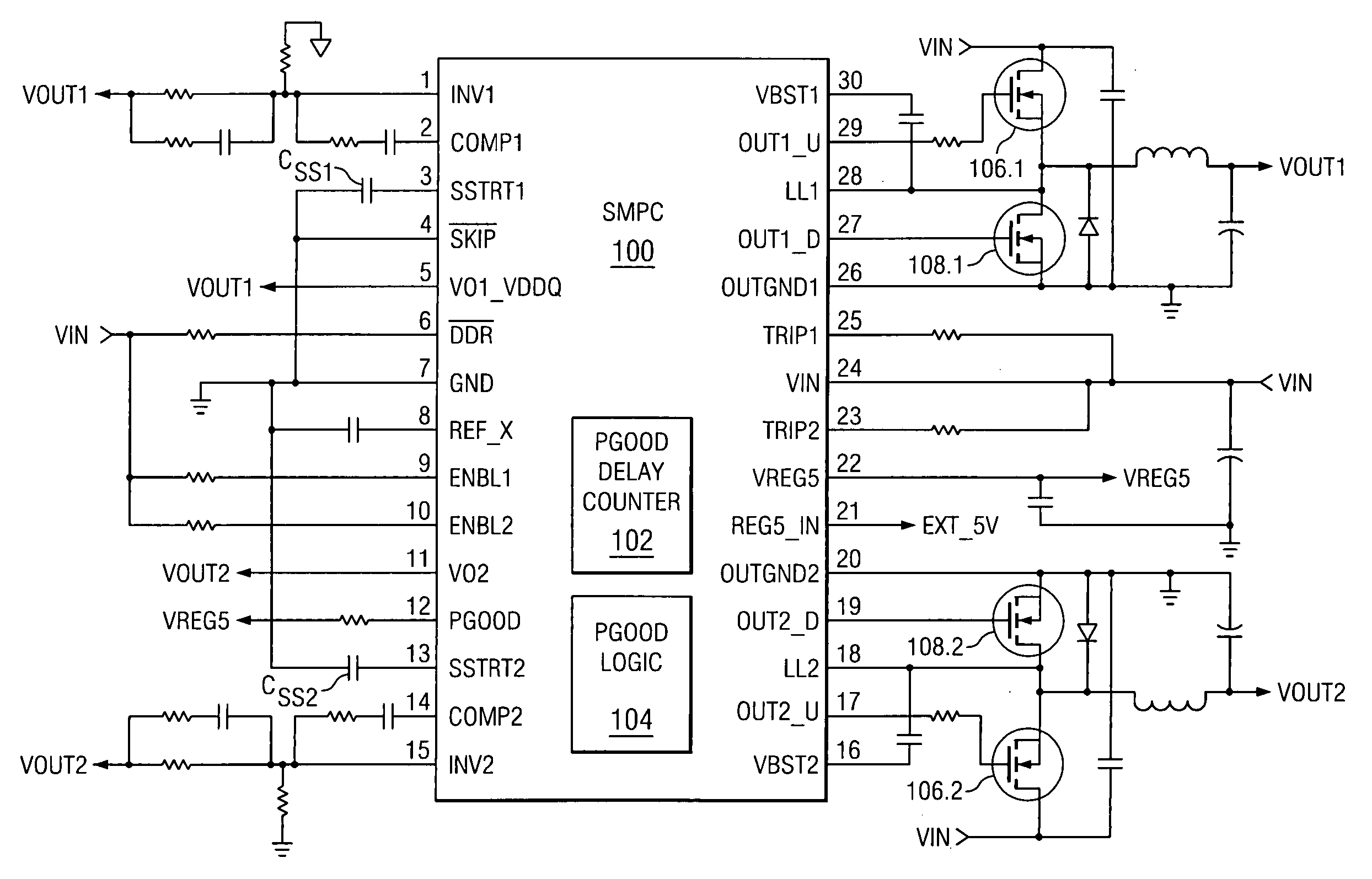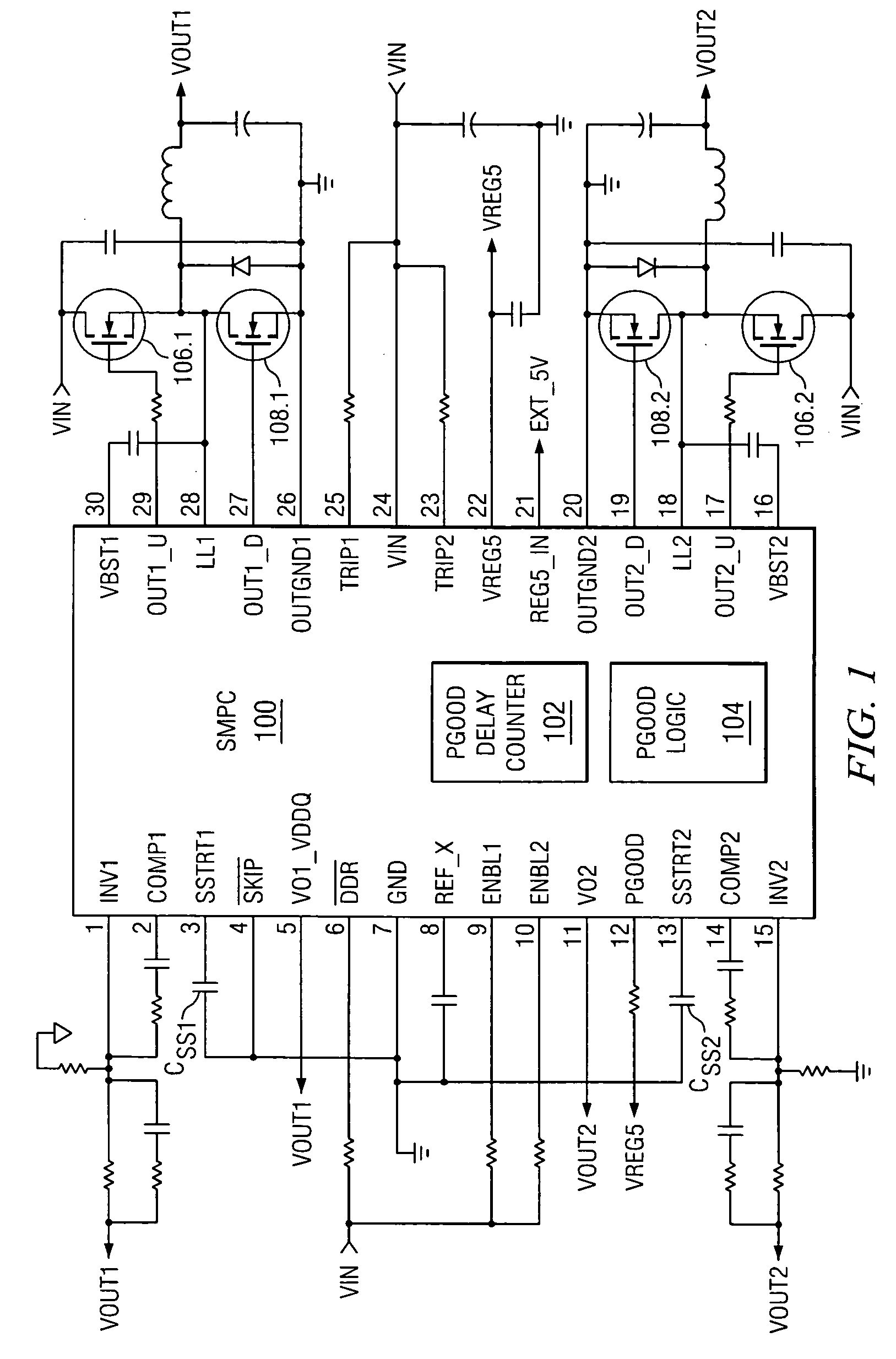Advanced monitoring algorithm for regulated power systems with single output flag
a monitoring algorithm and output flag technology, applied in the direction of power supply lines, power conversion systems, instruments, etc., can solve the problems of increasing power consumption, reducing the size of the ics, and no longer good power provided on the output channel, so as to reduce the overall cost of the converter, reduce the amount of circuit area required within the converter, and reduce the cost of the converter
- Summary
- Abstract
- Description
- Claims
- Application Information
AI Technical Summary
Benefits of technology
Problems solved by technology
Method used
Image
Examples
Embodiment Construction
[0018] An improved method of monitoring the output power generated by a switch mode power converter is provided that reduces the overall cost of the converter. The presently disclosed output power monitoring technique lowers the cost of the converter by allowing the circuit area within the converter to be reduced while reducing the number of output pins on the converter IC package.
[0019]FIG. 1 depicts an illustrative embodiment of an application of a Switch Mode Power Converter (SMPC) 100, in accordance with the present invention. As shown in FIG. 1, the SMPC 100 includes dual voltage inputs VIN, dual sets of voltage outputs VOUT1-VOUT2, a single Power-Good (PGOOD) signal output, and enable inputs ENBL1-ENBL2 for enabling dual output channels 1-2, respectively, within the SMPC 100. Further, the SMPC 100 includes a PGOOD delay counter 102 and PGOOD logic circuitry 104 for implementing a method of monitoring the output power provided by the SMPC 100 on the channels 1-2.
[0020] In the...
PUM
 Login to View More
Login to View More Abstract
Description
Claims
Application Information
 Login to View More
Login to View More - R&D
- Intellectual Property
- Life Sciences
- Materials
- Tech Scout
- Unparalleled Data Quality
- Higher Quality Content
- 60% Fewer Hallucinations
Browse by: Latest US Patents, China's latest patents, Technical Efficacy Thesaurus, Application Domain, Technology Topic, Popular Technical Reports.
© 2025 PatSnap. All rights reserved.Legal|Privacy policy|Modern Slavery Act Transparency Statement|Sitemap|About US| Contact US: help@patsnap.com



